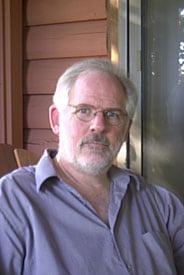Kyle Gann's 'Studies for a Disklavier' Set to Dance by Mark Morris & Company
 Kyle Gann |
In his online blog, Gann writes, "I've finally figured out what I want to do when I grow up: write Disklavier pieces for dance… you get to watch people transfer your rhythmic ideas into three-dimensional space in gestures surprising, comical and poignant, and then you bow at the end. What could possibly be better?"
"There seems no end to the complexity, sophistication and intoxication of Mr. Morris's choreographic response," writes Alastair Macaulay in The New York Times, and Gann concurs: "I was really impressed with the number of rhythmic levels Mark brought out," he says. "The dancers were moving at more than one tempo, simultaneously, offering an amazing visual translation."
The Disklavier has changed the way Gann composes. "It's like a sketch pad for me. Before, when writing for ensemble, I'd have to be careful about tempo when instruments were playing together. With the Disklavier, I put a dot anywhere on the page and it just plays when it comes up," he continues. "I can write and improvise without thinking ahead. It's more spontaneous, and more private, just me and the instrument."
As a direct result of "Studies for Disklavier," Gann has been commissioned by orchestra Volharding to write a piano concerto to premier in Amsterdam on October 31: he's writing in a style derived from working with the Disklavier.
"I am getting my students involved in writing for Disklavier," he adds, citing historically important projects focused on translations of player piano rolls: George Antheil's "Ballet Mécanique" using 16 Disklavier pianos, (Accent, Winter 2000) and Nancarrow's work. "But there's a problem with Nancarrow's music," Gann acknowledges. "He altered the hammers on his own piano to produce a more brittle sound; on a regular piano, it sounds mushy. If a Disklavier could be dedicated to his music, which is so dependent on timbre, it would sound more like he intended, like a harpsichord."
For further information, please visit www.kylegann.com.
For more information on Yamaha Disklavier pianos, write Yamaha Corporation of America, Piano Division, P.O. Box 6600, Buena Park, CA 90622; telephone (714) 522-9011; email infostation@yamaha.com; or visit Disklavier.
